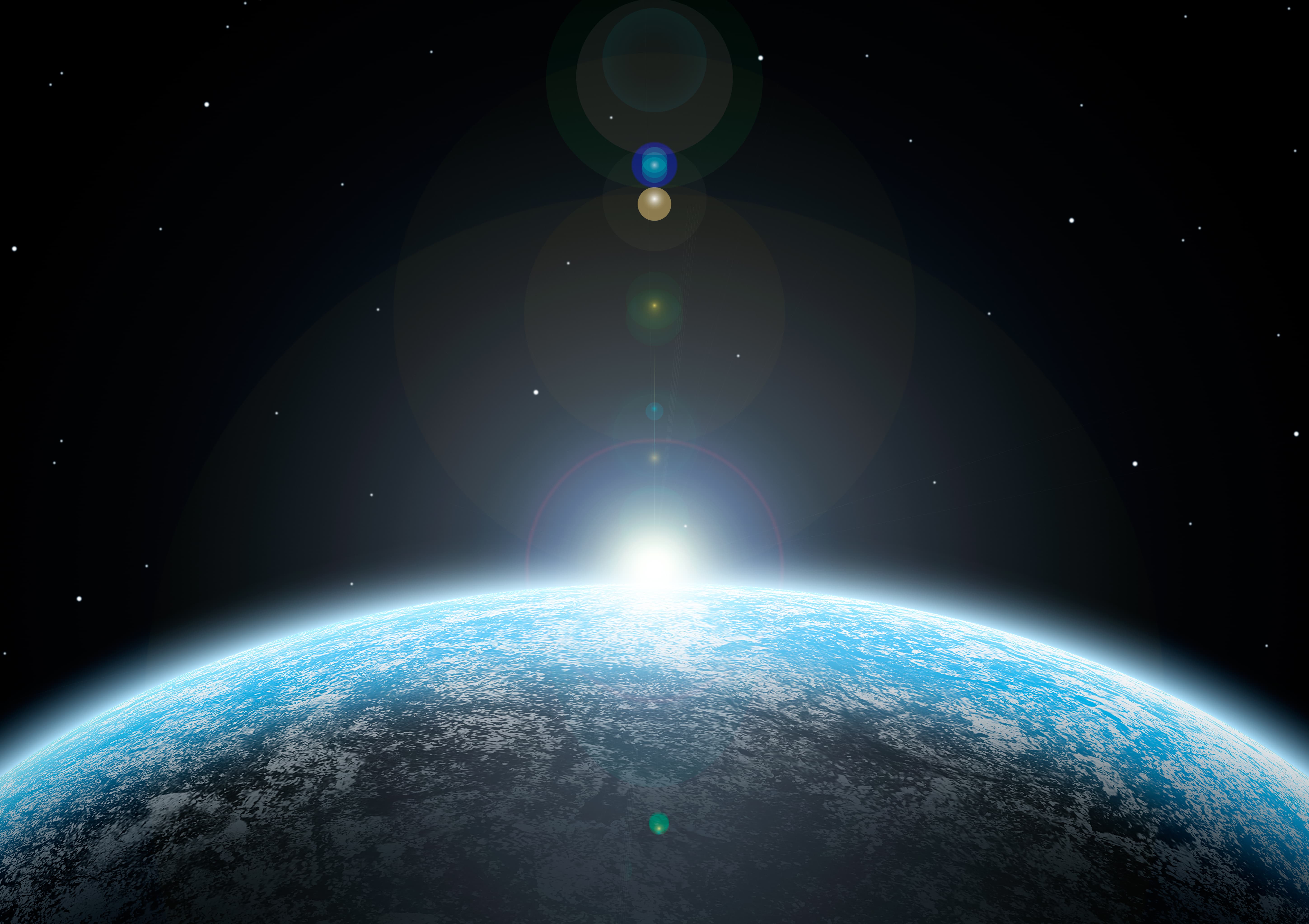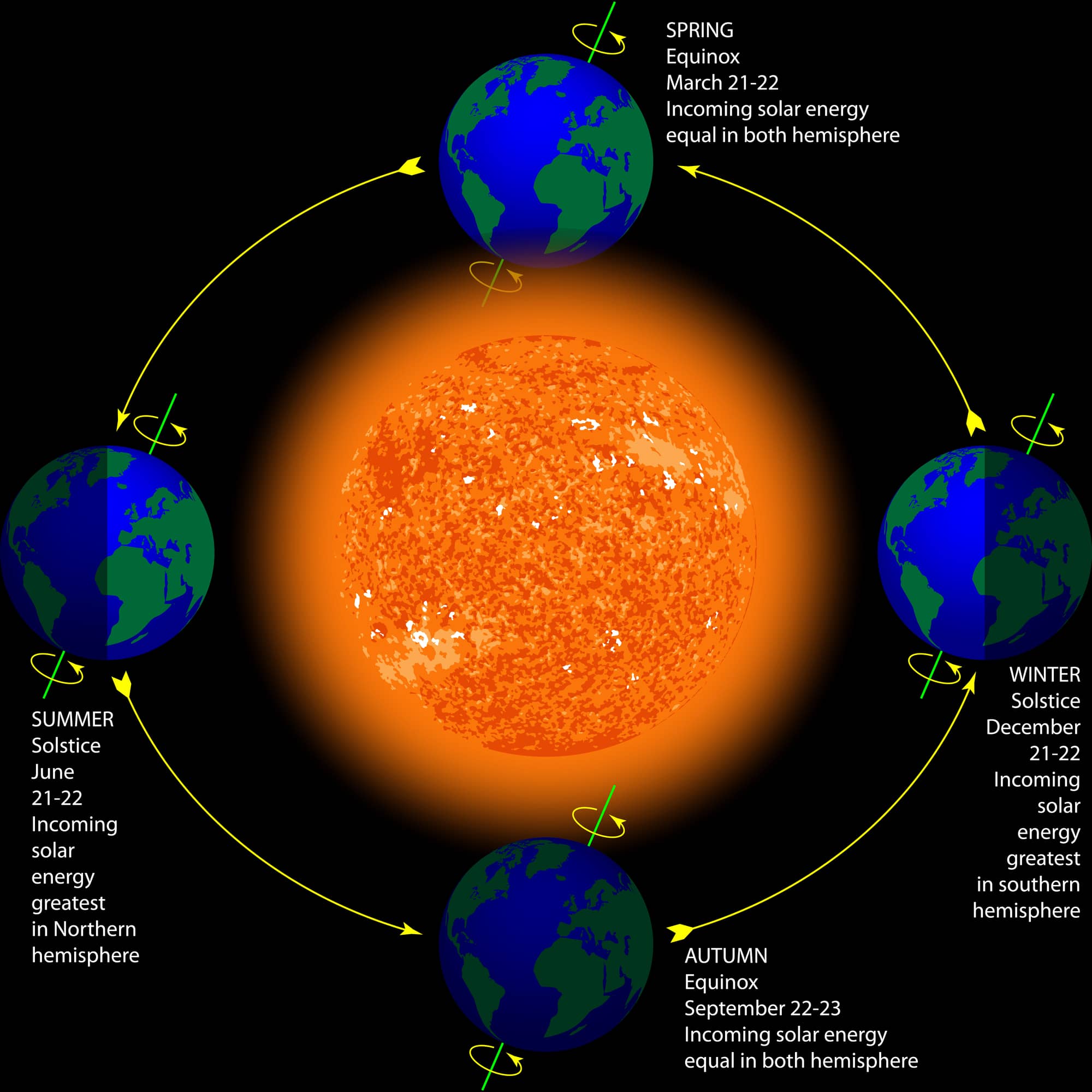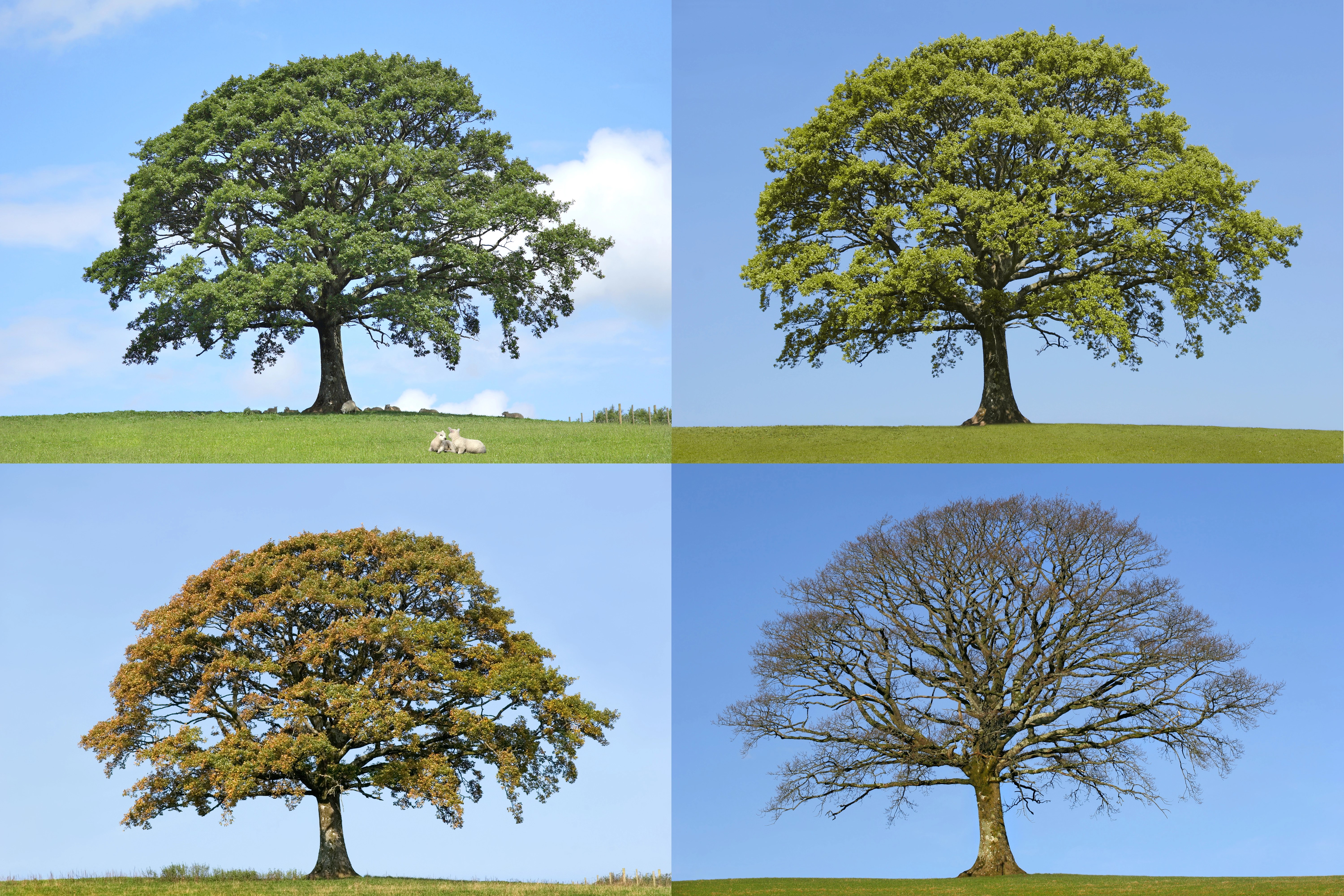

Solstices and Equinoxes
The solstices and equinoxes are defined by Earth’s position in its orbit relative to the Sun. They occur because the Earth’s axis of spin lies at an angle (23.5 degrees) to the plane on which it orbits the Sun. The schematic below illustrates this situation.
Solstice
At the June solstice (known as the summer solstice in the northern hemisphere and the winter solstice in the southern hemisphere), the north pole points as far towards the direction of the Sun as possible, whilst the south pole points away. This means that, in the Arctic, the Sun shines for 24 hours a day, while in the Antarctic, it does not shine. It also means that, on or around 21 June, the position of the Sun is directly overhead at local noon anywhere along the latitude of 23.5⁰N (the Tropic of Cancer) and everyone in the northern hemisphere will experience their longest daylight hours on that day.
The opposite situation occurs at the December solstice (known as the winter solstice in the northern hemisphere and the summer solstice in the southern hemisphere). On or around 21 December, the south pole faces towards the Sun; the north pole points away, and the noon position of the Sun is directly overhead on the latitude of 23.5⁰S (the Tropic of Capricorn). As a result, everyone in the southern hemisphere will experience their longest daylight hours this time.

Equinox
In between the solstices are two positions in Earth’s orbit where neither north nor south poles are pointing towards the Sun. These equinoxes happen on or around 21 March (the spring or vernal equinox) and 21 September (the autumn equinox). On these dates, the noon Sun will appear directly overhead at the Equator and everywhere on Earth will experience 12 hours of daylight and 12 hours of night. Another point to note is that those living on the Equator will always have equal night and day throughout the year.
But why are these astronomical events so named?
The word ‘solstice’ is descended from the Latin, ‘sol’ meaning ‘Sun’ and ‘sisto’ meaning ‘to stand still’. Of course, the Sun never appears to stand completely still on any day of the year; fortunately, Earth keeps turning. However, as the June solstice is approached, the northward shift of the positions where the Sun is directly overhead at noon, slows down. It stops on the solstice day, before beginning to shift southwards again. We say that the Sun reaches its northernmost limit on the solstice, even though of course it is not the Sun that is actually moving. The same is true for the southern hemisphere on the December solstice when the apparent southward shift stops. Finally, the word ‘equinox’ is descended from the Latin ‘equ’ meaning ‘equal’ and ‘nox’ meaning ‘night’ and is therefore very appropriate to describe the situation when the whole world has the same amount of daylight and night-time.




